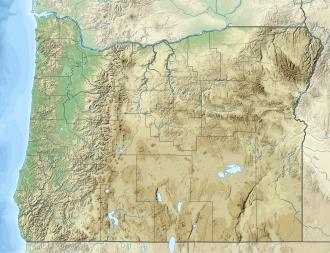| Gray Butte | |
|---|---|
| Highest point | |
| Elevation | 5,108 |
| Coordinates | 44°25′00″N121°06′04″W / 44.416798°N 121.101151°W |
| Geography | |
| Location | Jefferson, Oregon, U.S. |
| Topo map | USGS Gray Butte [1] |
Gray Butte is a volcanic butte in the southeast corner of Jefferson County, Oregon, United States. It is composed of welded tuff and is a part of the Crooked River caldera. [2] A recreation trail for hiking, horseback riding, and mountain biking leads up the side of the butte. [3] The butte is located near the popular tourist site of Smith Rock. [4]
